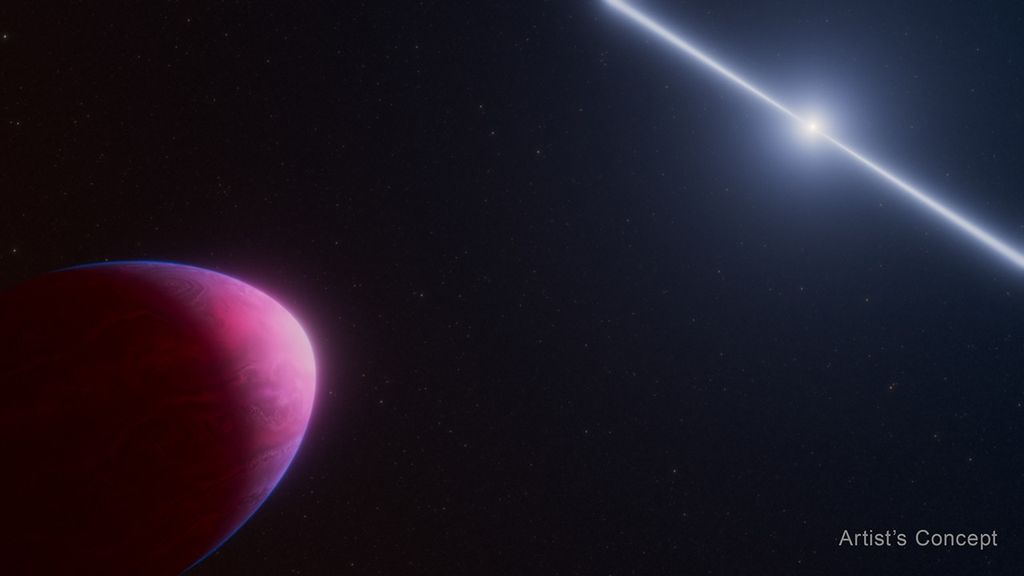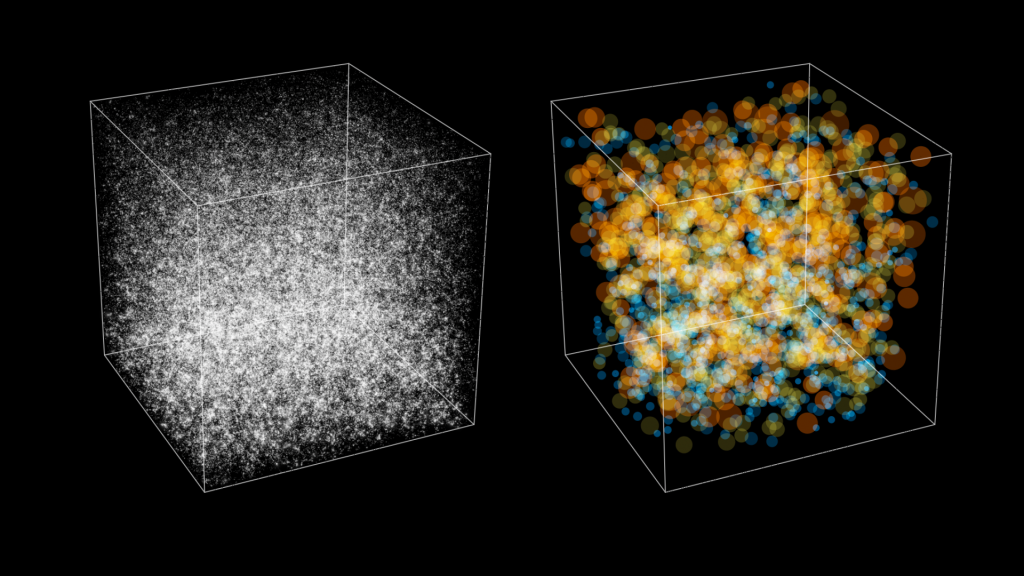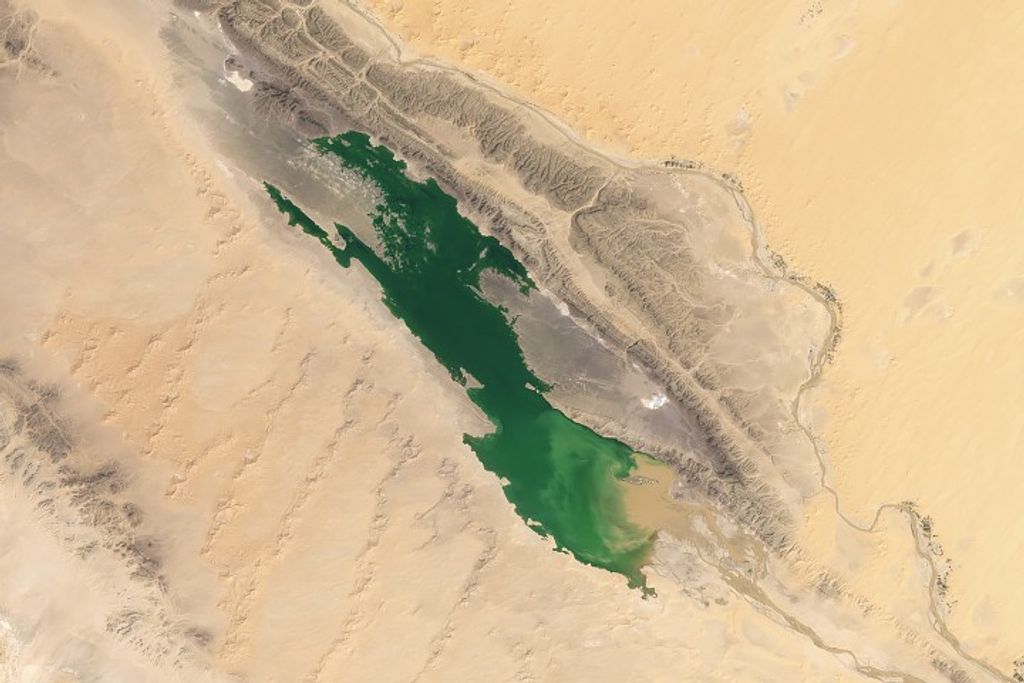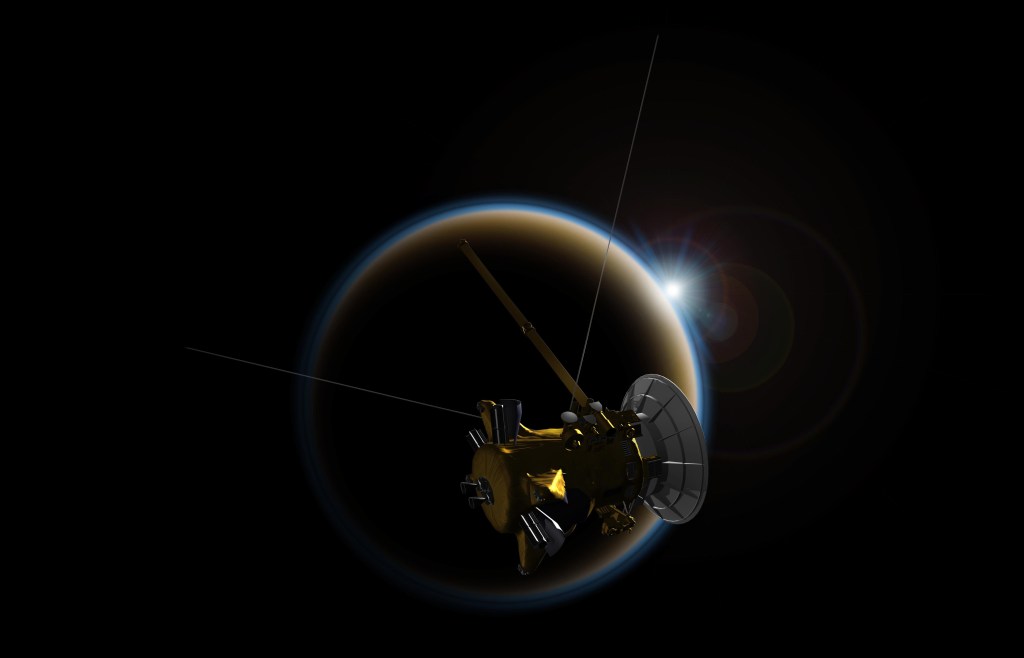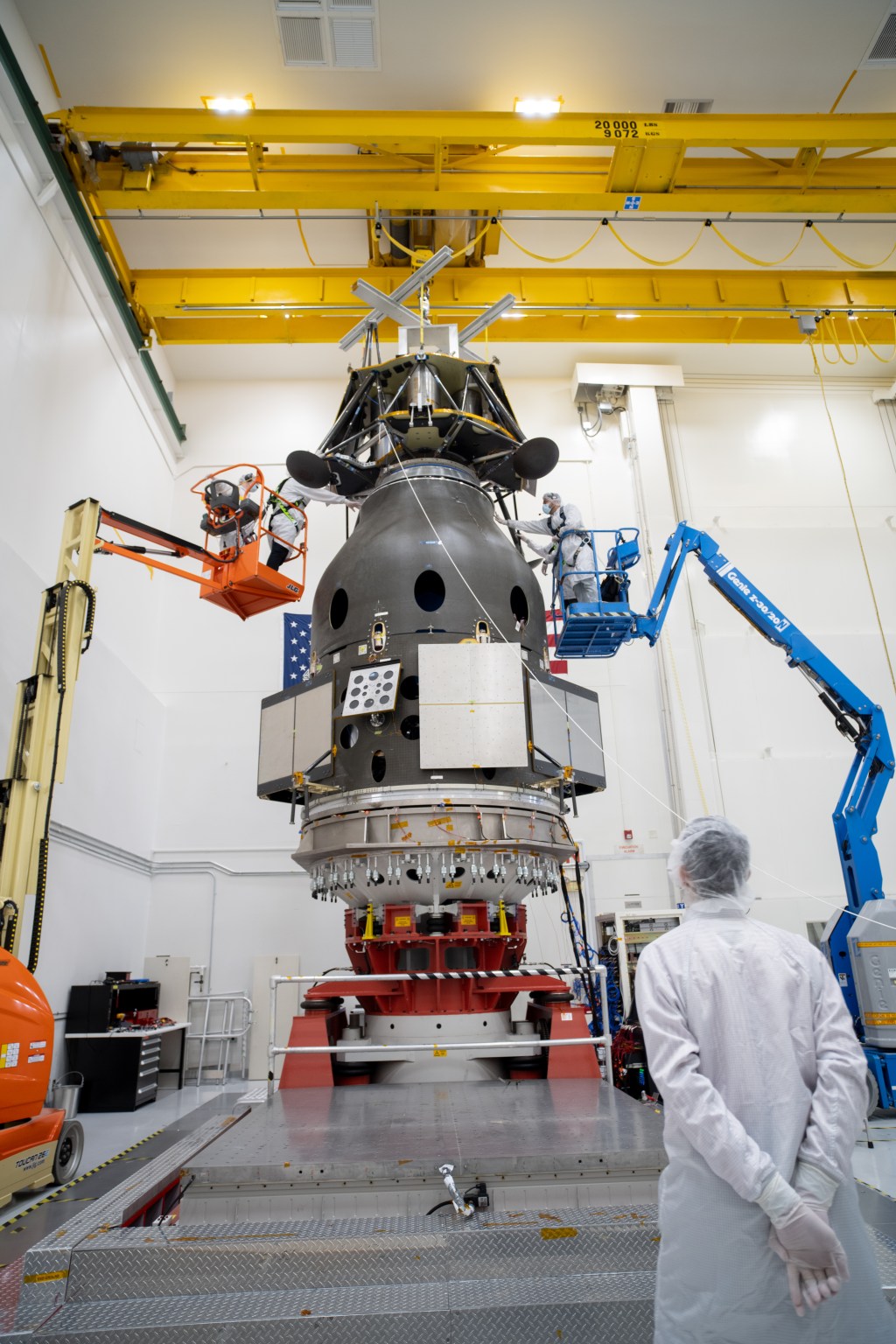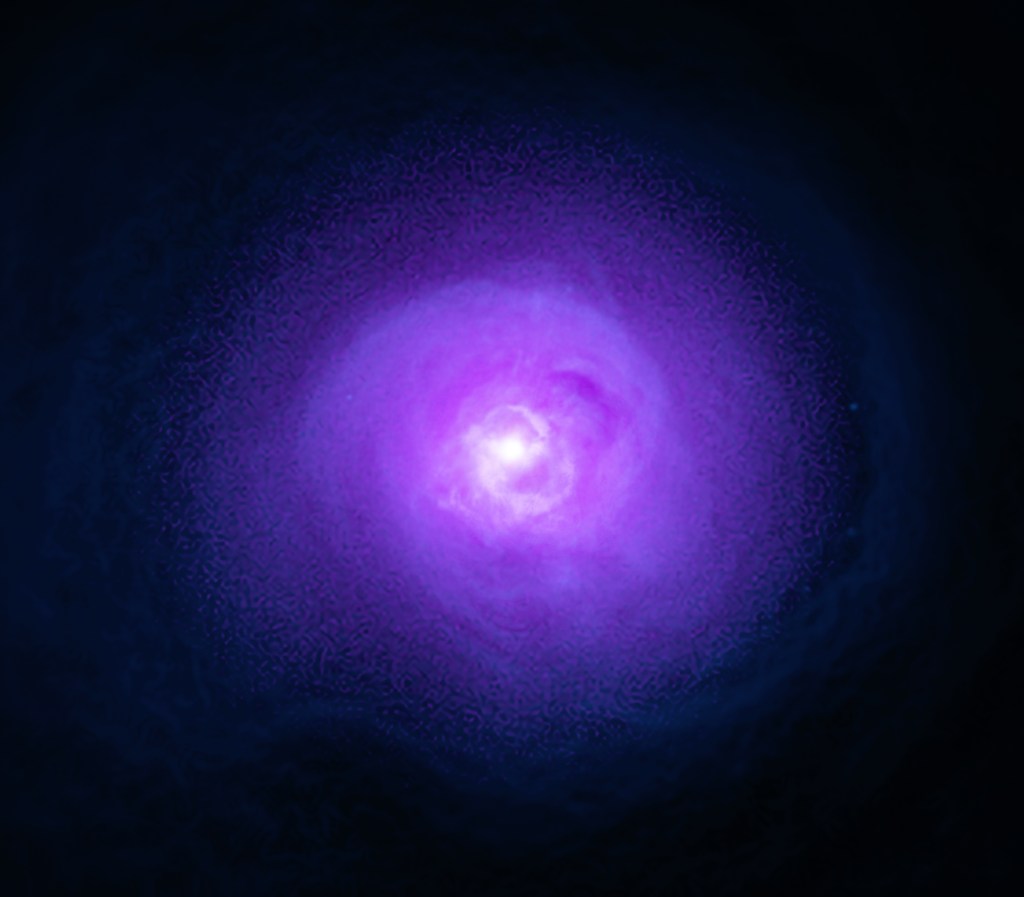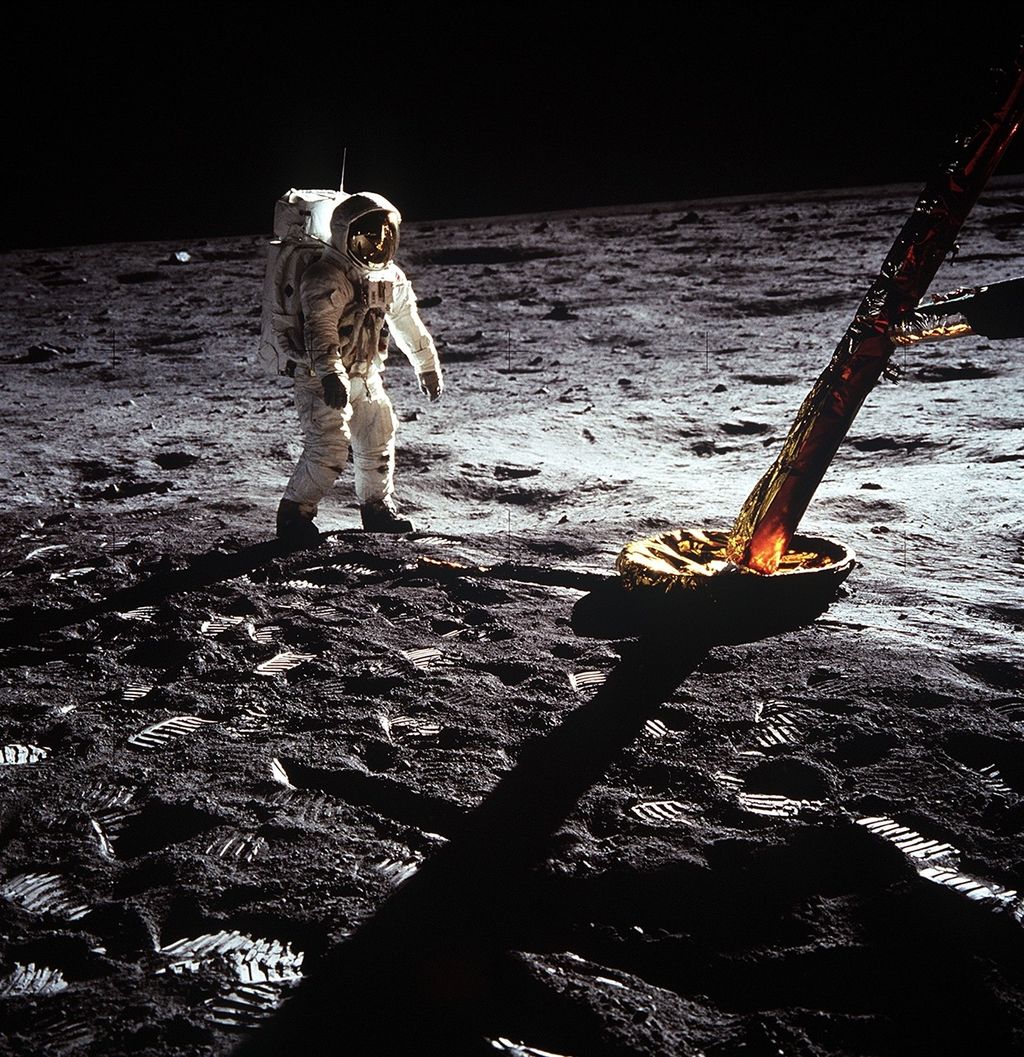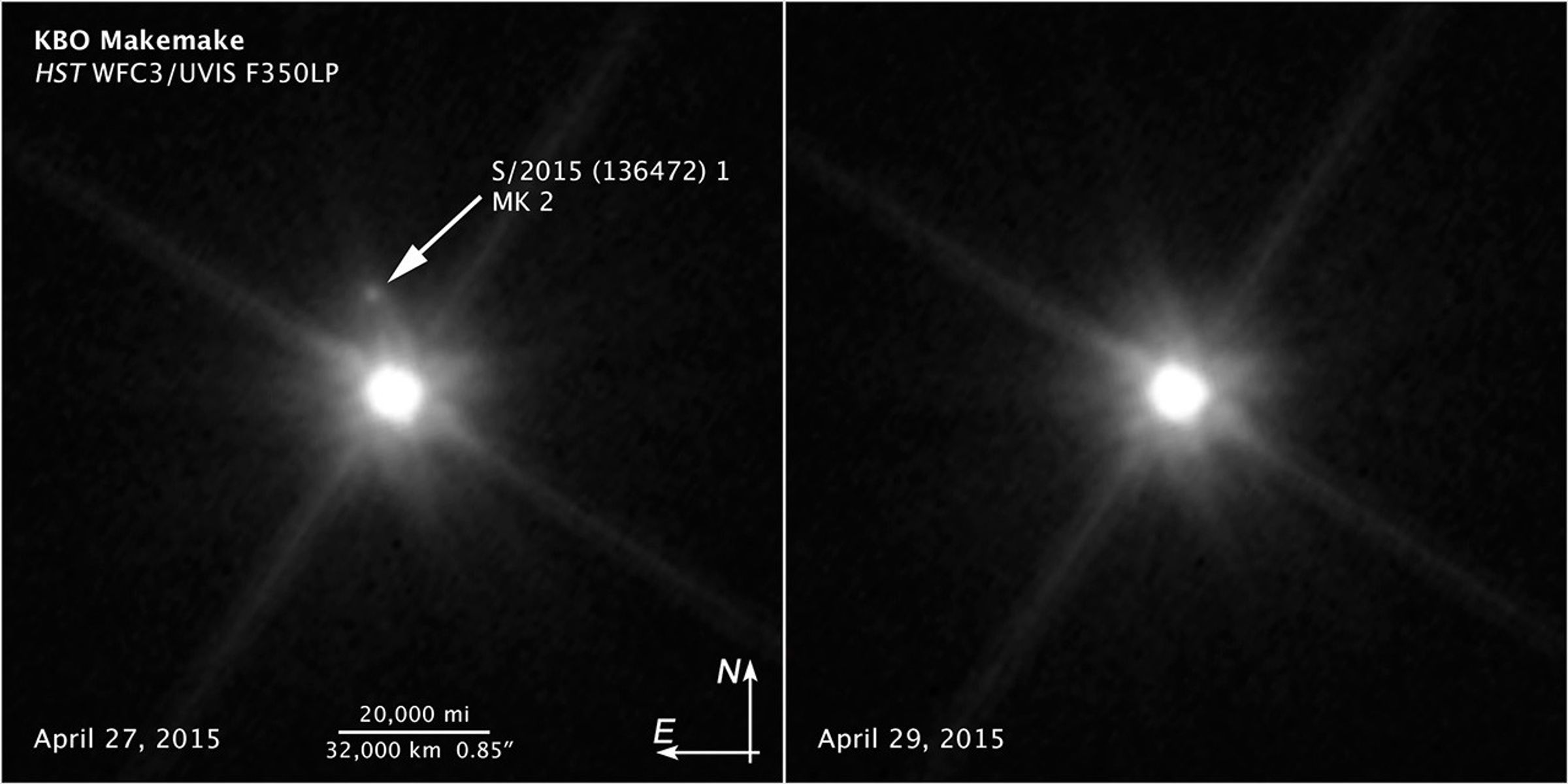1 min read
Makemake and Its Moon
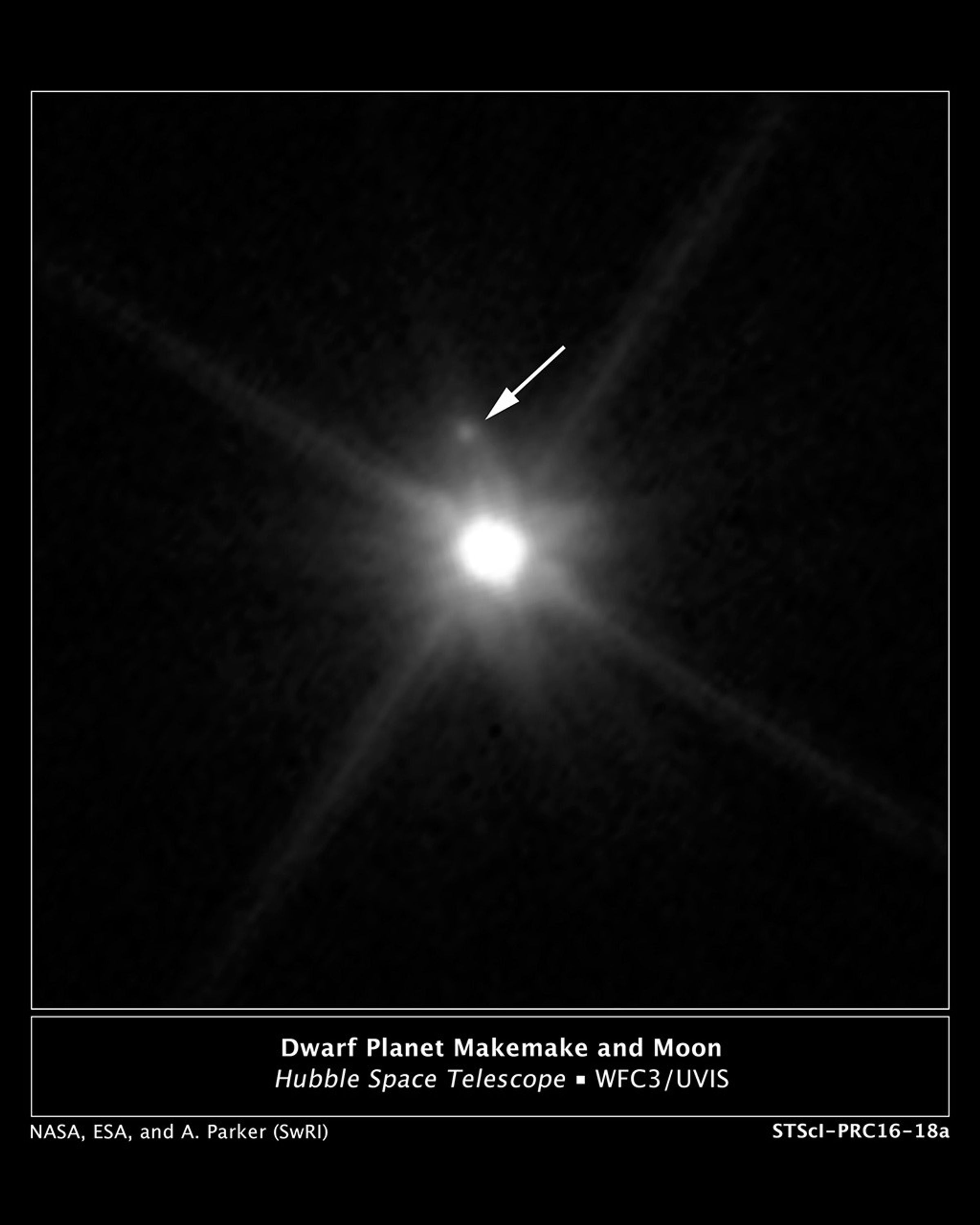
This Hubble Space Telescope image reveals the first moon ever discovered around the dwarf planet Makemake. The tiny moon, located just above Makemake in this image, is barely visible because it is almost lost in the glare of the very bright dwarf planet. The moon, nicknamed MK 2, is roughly 100 miles wide and orbits about 13,000 miles from Makemake. Makemake is 1,300 times brighter than its moon and is also much larger, at 870 miles across.
The Makemake system is more than 50 times farther than the Earth is from the sun. The pair resides on the outskirts of our solar system in the Kuiper Belt, a vast region of frozen debris from the construction of our solar system 4.5 billion years ago.
Previous searches for a moon around Makemake turned up empty. The moon may be in an edge-on orbit, so part of the time it gets lost in the bright glare of Makemake.
Hubble's sharp-eyed Wide Field Camera 3 made the observation in April 2015.
About the Object
- R.A. PositionR.A. PositionRight ascension – analogous to longitude – is one component of an object's position.12h 49m 39.0s
- Dec. PositionDec. PositionDeclination – analogous to latitude – is one component of an object's position.26° 22' 12.0"
- ConstellationConstellationOne of 88 recognized regions of the celestial sphere in which the object appears.Coma Berenices
About the Data
- Data DescriptionData DescriptionProposal: A description of the observations, their scientific justification, and the links to the data available in the science archive.
Science Team: The astronomers who planned the observations and analyzed the data. "PI" refers to the Principal Investigator.The HST data were taken from proposal 13668 PI: M. Buie (Southwest Research Institute), W. Grundy (Lowell Observatory), and K. Noll (NASA Goddard Space Flight Center). The science team comprises A. Parker and M. Buie (Southwest Research Institute), W. Grundy (Lowell Observatory), and K. Noll (NASA Goddard Space Flight Center). - InstrumentInstrumentThe science instrument used to produce the data.HST>WFC3
- Exposure DatesExposure DatesThe date(s) that the telescope made its observations and the total exposure time.April 27/29, 2015, Exposure Time: 4,350 seconds
- FiltersFiltersThe camera filters that were used in the science observations.F350LP
- Object NameObject NameA name or catalog number that astronomers use to identify an astronomical object.Makemake, Dwarf Planet (136472), and its Moon S/2015 (136472) 1, MK 2
- Object DescriptionObject DescriptionThe type of astronomical object.Kuiper Belt Object, Dwarf Planet (136472) Makemake (870 miles in diameter) and moon S/2015 (136472) 1, MK 2 (100 miles in diameter)
- Release DateApril 26, 2016
- Science ReleaseHubble Discovers Moon Orbiting the Dwarf Planet Makemake
- Credit

Related Images & Videos
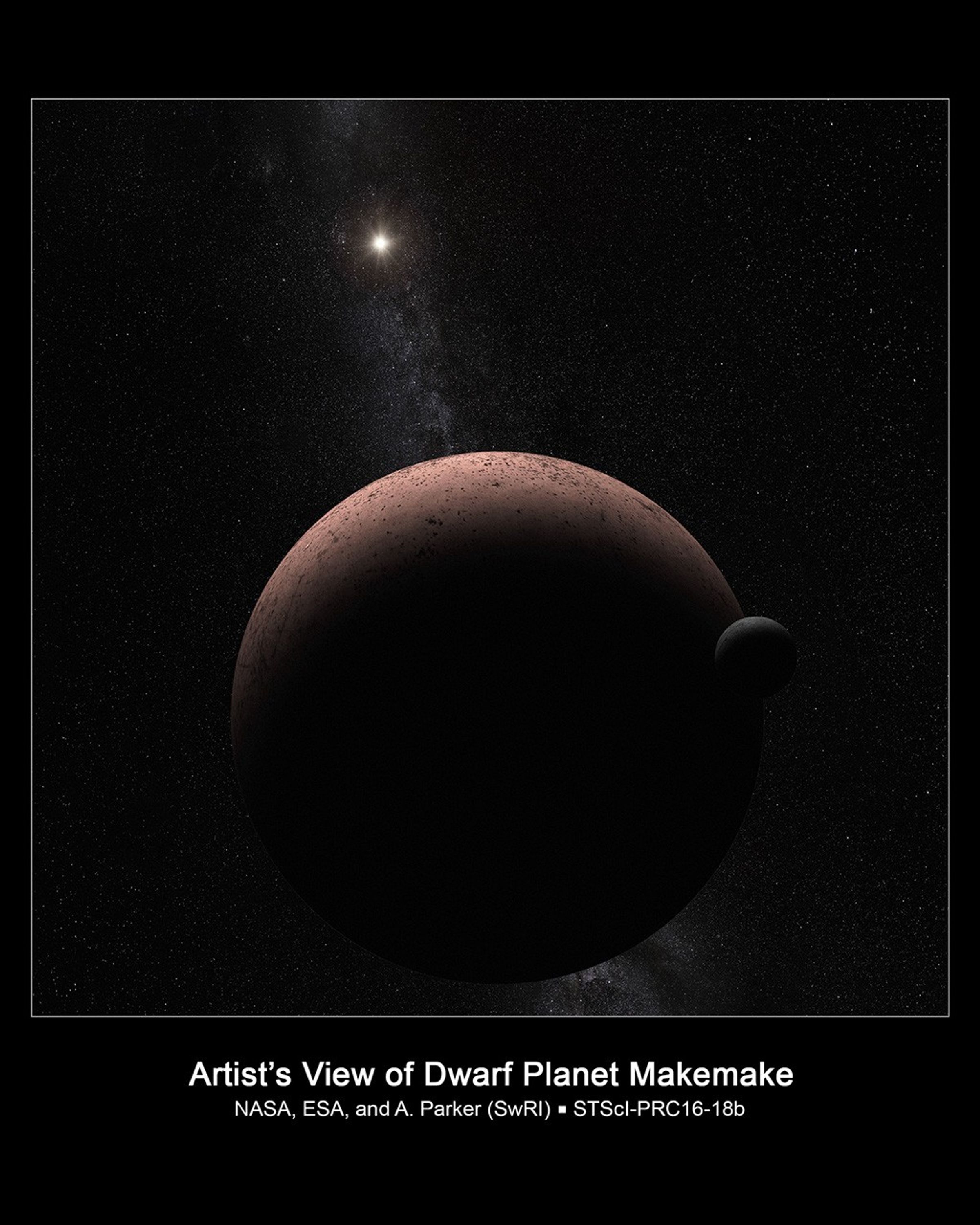
Artist's Concept of Makemake and Its Newly Discovered Moon (with title)
This artist's concept shows the distant dwarf planet Makemake and its newly discovered moon. Makemake and its moon, nicknamed MK 2, are more than 50 times farther away than Earth is from the sun. The pair resides in the Kuiper Belt, a vast reservoir of frozen material from the...
Share
Details
Claire Andreoli
NASA’s Goddard Space Flight Center
Greenbelt, Maryland
claire.andreoli@nasa.gov


